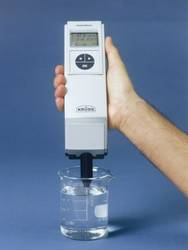
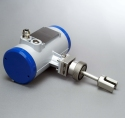
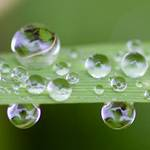
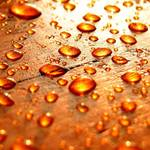
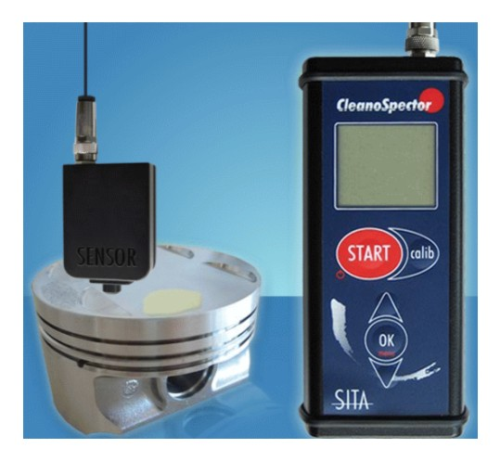
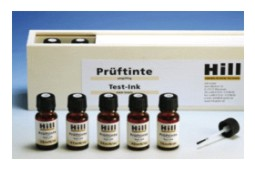
The theme addressed in Tom Friedman’s highly successful book, “The World is Flat,” 1 does not apply to the U.S. parts cleaning industry and market. I believe our finishing marketplace is an exception to Friedman’s otherwise accurate thesis.
This column expands upon my observation to that effect, which I described in my previous column (Metal Finishing, Volume 108, Issue 2, Feb. 2010). My basis for that belief is attendance at the Parts-2-Clean (P2C) international (though primarily German) trade show devoted to parts cleaning, held annually in Stuttgart.
INTERNAL U.S. STRESSES
For nearly two decades our market had two stress points. The first is well known, but not critical: It is the stress between and among suppliers, users, managers, and regulators of aqueous and solvent cleaning technology.The second stress is not as well recognized, but is, IMHO, much more critical: It is the stress between users, who are slowly recognizing that they want meaningful options (which alleviate the first stress), and the marketplace, which isn’t supplying them.
EUROPEAN STRESS
Neither stress appears to weaken the European/German parts cleaning industry I saw represented by the offerings available at the P2C show.
Suppliers of both aqueous and solvent technology coexist and compete for business. Both are generally accepted by users, managers, and regulators.
Methylene chloride, trichloroethylene, and perchloroethylene are used in enclosed machines with fully sealed fluid storage, transfer, and disposal systems.
N-propyl bromide isn’t mentioned because there is no role for it to play—chlorinated solvents are “understood” and can be used.
Some non-flammable solvents are also used in the same way (see next month’s column).Interestingly, the phrase “hazardous solvents” is less commonly spoken or printed than in the U.S.
Rather, the stress in the European/German market is between users who want better cleaning quality using automated productivity at a somewhat lower cost, and suppliers who seek to fulfill that desire. Equipment prices, which appear outrageous to this provincial observer, were also thought to be so by some attendees.
The key to business success for suppliers of cleaning technology in Germany is to be able to do parts cleaning “better, faster, cheaper,” rather than to do it in a certain way.
QUALITY IN THE GUIDEBOOK
Every show has a guidebook highlighting what the show’s management thinks is important to attendees; P2C is no exception. Two sectors getting equal billing with aqueous cleaning and parts drying were management of quality of the cleaning bath, and part cleanliness.
Several firms that exhibited products used in either application spoke with me about their desire to merchandise their offerings in the U.S., which they perceived as an underserved market for their wares.
THE BATH WATER
Bath concentration of surfactant can be2 inferred from use of two on-line measurement methods—neither of which is revolutionary:
- Of the surface tension3 of the bath liquid (see Figure 1).
- Of the sound velocity in the bath liquid (see Figure 2 4).
Bath composition of surfactant is inferred via comparison of the empirical result to a calibrated reference curve.The drawback with both methods is expressed in the word inferred. The inference comes from a calibration done in a solution of only water and surfactant—no soil.
The core assumption upon which either device operates is that the presence of soil has no impact upon the measurement.
Obviously, this is incorrect from the point of view of a logician; but from the point of view of an application specialist, it is usually correct. The reason is that either measurement technique is sensitive to only the content of free surfactant.5 That’s what users want to identify because it informs them when to take action.
Either measurement can be made within the operating cleaning bath, or in a sample of bath fluid.
THE EXAMINATION
Examination of cleaned surfaces for defects is also commonly done. Three methods of examination were exhibited, each by multiple firms.
- Measurements of contact angle6 via both hand-held and automat- ed equipment.
- How a drop of liquid wets, or doesn’t wet, a surface is an indi - rect and effective measurement of surface cleanliness.7
- Measurements of surface fluores- cence by both hand-held and automated equipment. The
- fluorescence measuring principle allows a reliable detection of traces of contamination such as oils, grease or cooling lubricants. Obviously, this device can’t be used with soils which don’t pro - duce fluoresce when irradiated with “black” (UV) light particles, water-soluble materials, and non- hydrocarbons.
- Measurements of surface energy using dyne liquids, which can be applied from either an eye-drop per (Figure 6 8) or a marker pen.
Each liquid9 is differently formulated to a surface tension value. When the applied drop of test liquid “floats” wets the surface, the energy of the cleaned surface is known and can be compared to that of a satisfactorily cleaned surface.
ON FURTHER EXAMINATION
Adding emphasis to the focus on measurements of surface cleanliness was the presence of two additional methods of surface examination.
- Microscopic and photographic equipment (one would expect this in Germany.
- Particle location, counting and shape/size, and composition analysis.
Each of these instruments was offered at P2C by multiple suppliers. I estimate that at least 20% of booth space was claimed by these suppliers, who don’t sell any “cleaning equipment” or fluids.
SUMMARY
The whole point of this column is that measurement is a common step employed in parts cleaning in Europe/Germany, and I seek to point this out as a difference between how work is done in nearly all the metal finishing shops I have visited in the U.S. and how it is done abroad.Next month, we’ll conclude this three part series about my observations at the 2009 Parts-2-Clean Exhibition.
REFERENCES
- Yet, in a way it does cover our U.S. operations—finishing operations, which include parts cleaning, are continually being relocated to offshore operators at a rate exceeding the relocation to the U.S.And, I am led to believe, is commonly done in Germany for parts cleaning operations.
- The measurement is calculated from the rate of rise of an air bubble in a liquid. The rate is directly dependent upon the bubble diameter (Stokes’s Law). Bubble size (diameter) is directly dependent, for a known temperature, upon the liquid surface tension. Bubbles are larger when the surface tension is smaller. (Figure 5 image courtesy of Kruss, http://www.kruss.de/en.)
- The measurement probe is split into two portions.
- Soil removed from parts is coordinated with surfactant—otherwise it would likely still be attached to the parts—and is thought not to affect solution characteristics because it is not dissolved in the water solution.
- The relationship of contact angle to surface cleanliness was covered in previous issues, including:
- Durkee, J. B., “Using Simple Science to Assay Surface Cleanliness,” Metal Finishing, Volume 106, Issue 2, February 2008, Pages 49-51; Kuhn, A., “Determining Whether a Metal Surface Is Really Clean: Two Testing Methods Offer an Inexpensive Yet Accurate Means for Measuring Cleanliness,” Metal Finishing, Volume 103, Issue 9, September 2005, Pages 16-21, and Kuhn, A., “Starting off with a Clean Slate: Using Dyne Liquids Is One of the Easiest and Most Cost-effective Means of Assessing Surface Cleanliness,” Metal Finishing, Volume 103, Issue 5, May 2005, Pages 72-79.
- Images in Figures 3 and 4 courtesy of Kruss, http://www.kruss.de/en.
- Image in Figure 6 courtesy of Hill GmbH, http://www.hill-gmbh.de/de/start.htm.
- This author recommends use of dyne liquids (also called test inks) which are non-toxic. Not all are so.
BIO
John Durkee is the author of the book Management of Industrial Cleaning Technology and Processes, published by Elsevier (ISBN 0-0804-48887). He is an independent consultant specializing in metal and critical cleaning. You can contact him at PO Box 847, Hunt, TX 78024 or 122 Ridge Road West, Hunt, TX 78024; 830-238-7610; Fax 612-677-3170; or jdurkee@precisioncleaning.com.




